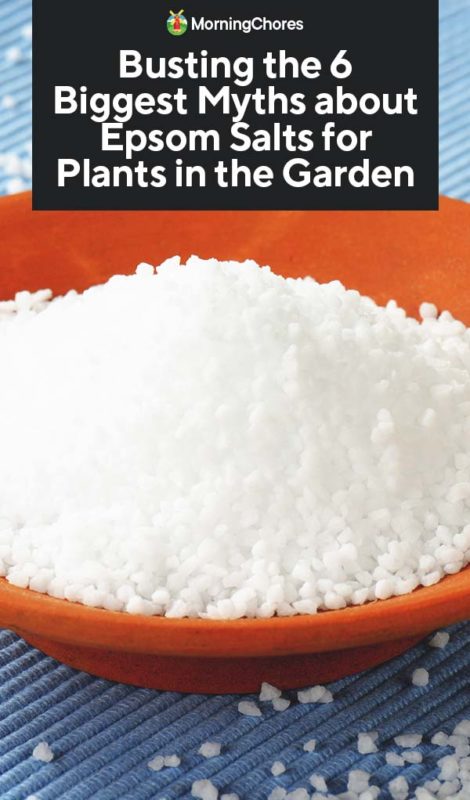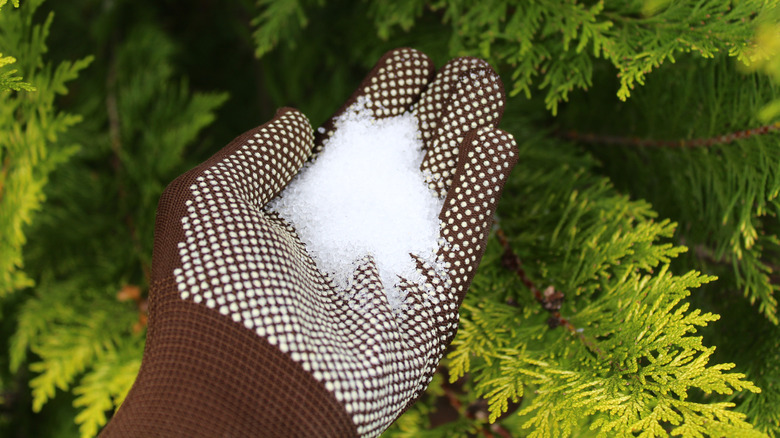Gardening Tips: What Plants Don't Like Epsom Salt and Why
Gardening Tips: What Plants Don't Like Epsom Salt and Why
Blog Article
Learn About the Details Plants That Are Negatively Affected by Epsom Salt Application
Epsom salt, a prominent home treatment for different horticulture issues, is frequently commended for its advantageous impacts on plant growth. Recognizing the certain plants that can be adversely impacted by Epsom salt is crucial for any type of gardener looking to optimize their plant treatment routine.
Roses

Roses, especially delicate to adjustments in their setting, can be adversely influenced by the application of Epsom salt. While Epsom salt is frequently utilized as a fertilizer to promote plant development and enhance blooming, roses are among the plants that do not react well to its application. The high magnesium content in Epsom salt can disrupt the uptake of other essential nutrients by the rose plants, resulting in deficiencies that manifest as yellowing fallen leaves or stunted growth.

Tomatoes
Tomatoes, understood for their adaptability in culinary applications, can show adverse effects when subjected to Epsom salt due to their specific nutrient needs. While Epsom salt is usually promoted as a solution for numerous plant concerns, consisting of blossom end rot in tomatoes, its application can bring about harmful results otherwise made use of sensibly. Tomatoes are heavy feeders that need a well balanced intake of nutrients, especially calcium, to flourish. Excessive Epsom salt, which is magnesium sulfate, can disrupt the fragile nutrient equilibrium required by tomatoes, possibly causing deficiencies in other essential nutrients like calcium. This imbalance might show up in signs and symptoms such as stunted growth, yellowing leaves, and even lowered fruit production in tomatoes. Consequently, when thinking about making use of Epsom salt on tomatoes, it is vital to comply with advised application rates and soil testing to stop unplanned consequences on the overall health and productivity of these cherished garden plants.
Peppers
Peppers, respected for their numerous shades and degrees of spiciness, can demonstrate sensitivity to unfavorable impacts from Epsom salt when not used with care and factor to consider for their particular nutritional needs. what plants don't like epsom salt. Peppers, coming from the Solanaceae household, need a delicate balance of nutrients to flourish. While Epsom salt is recognized to increase magnesium degrees in plants, too much application can interrupt this equilibrium, resulting in adverse effects on pepper plants
When peppers are exposed to high levels of more helpful hints magnesium from Epsom salt, it can disrupt the plant's capability to absorb various other crucial nutrients like calcium and potassium. This discrepancy may materialize in signs and symptoms such as leaf discoloration, stunted growth, and reduced fruit manufacturing. Additionally, the too much magnesium can alter the dirt pH, further intensifying nutrient uptake problems for peppers.

Rhododendrons
Offered the sensitivity of particular plant types to discrepancies brought on by Epsom salt, it is essential to consider the effect on Rhododendrons, which likewise need specific nutrient degrees to prosper. Rhododendrons are acid-loving plants that prefer acidic dirt conditions with a pH array in between 4.5 and 6.0. Epsom salt, chemically known as magnesium sulfate, can modify the dirt pH and interrupt the fragile equilibrium of nutrients crucial for Rhododendron health and wellness.

To maintain the ideal development and health and wellness of Rhododendrons, it is critical to prevent the unplanned usage of Epsom salt and rather concentrate on supplying the details acidic soil conditions and nutrients that these plants require for flourishing.
Azaleas
Azaleas, understood for their vivid blooms and wide variety of colors, are ornamental bushes that belong to the Rhododendron genus. These preferred flowering plants are typically discovered in yards, parks, and landscapes due to their beauty and versatility. Azaleas are delicate to changes in soil pH levels, more info here which can substantially affect their growth and general health. While Epsom salt is typically utilized as a treatment for magnesium shortage in plants, its application to azaleas can have adverse results.
Azaleas like somewhat acidic soil problems, and an excess of magnesium from Epsom salt can disrupt this equilibrium, leading to nutrient imbalances and possible toxicity issues. The wrong application of Epsom salt can result in stunted development, yellowing of leaves, and general decrease in the wellness of azaleas.
Verdict
To conclude, it is vital to be knowledgeable about the details plants that can be detrimentally affected by the application of Epsom salt. look what i found Roses, tomatoes, rhododendrons, peppers, and azaleas are some examples of plants that may not benefit from Epsom salt and can also endure damage. It is vital to study and understand the needs of each plant varieties before making use of Epsom salt as a fertilizer to ensure their health and wellness and well-being.
Comprehending the details plants that can be detrimentally affected by Epsom salt is essential for any gardener looking to maximize their plant care routine. While Epsom salt is generally utilized as a fertilizer to promote plant development and enhance flowering, roses are one of the plants that do not respond well to its application.Excessive usage of Epsom salt can also result in an accumulation of salts in the soil, leading to root damages and dehydration of the rose plants. While Epsom salt is known to boost magnesium levels in plants, extreme application can disrupt this balance, leading to adverse impacts on pepper plants.
The high salt content in Epsom salt can additionally dehydrate Rhododendron origins, causing additional stress and anxiety and damages to the plant. (what plants don't like epsom salt)
Report this page